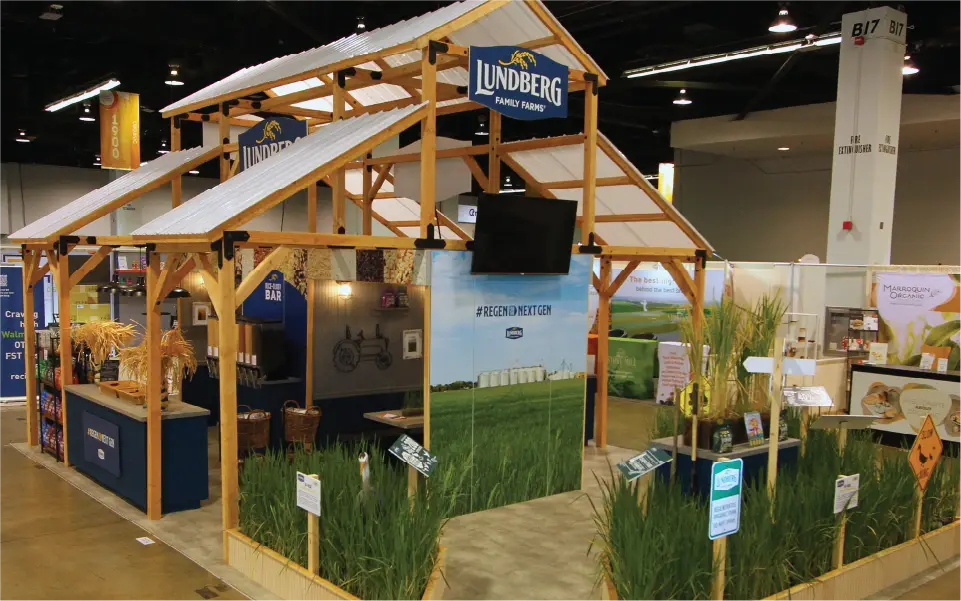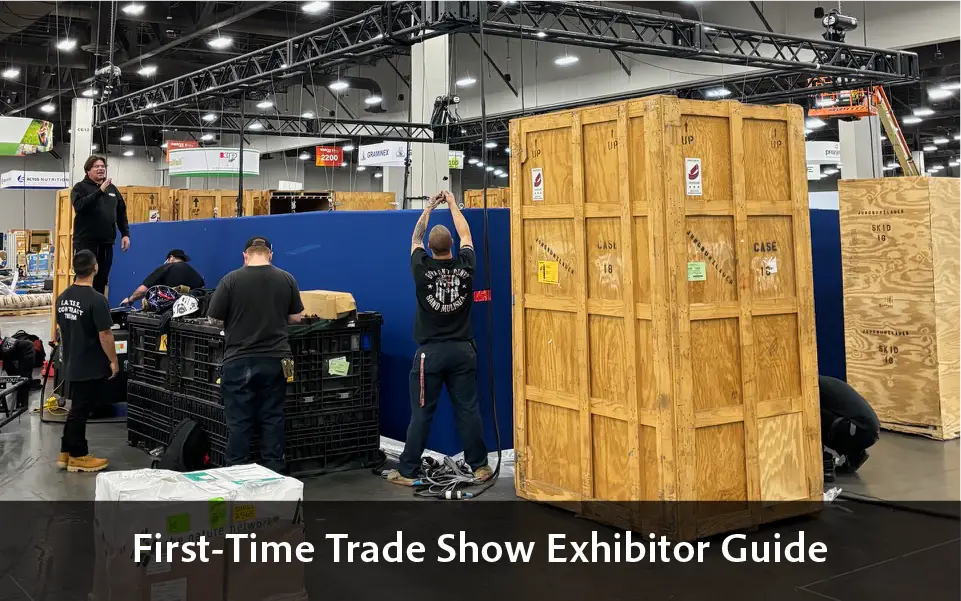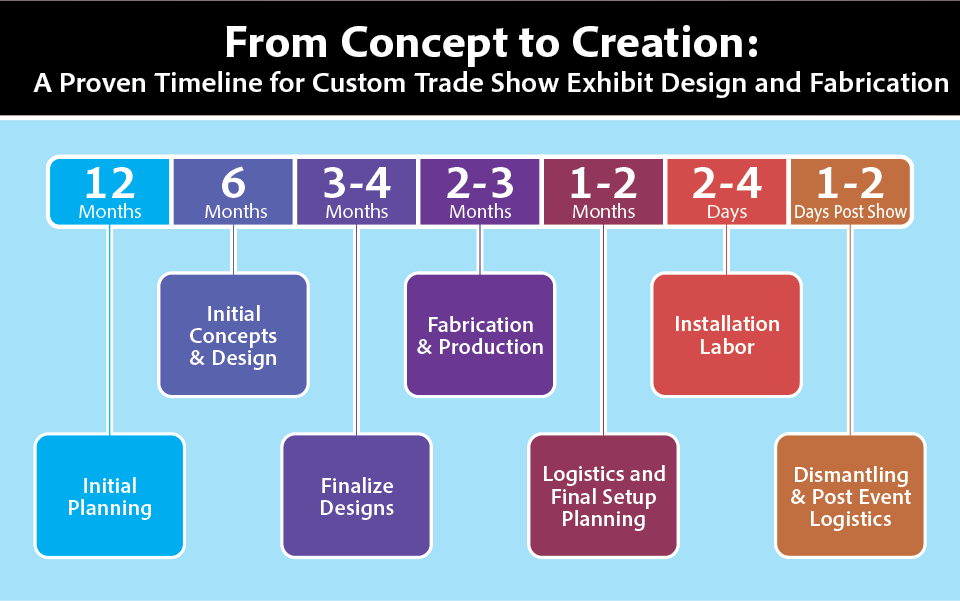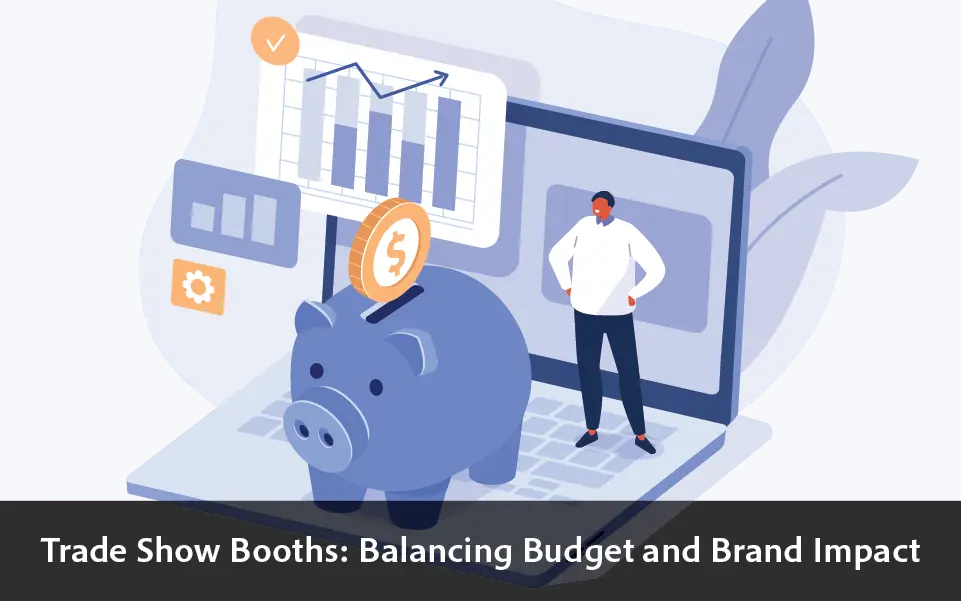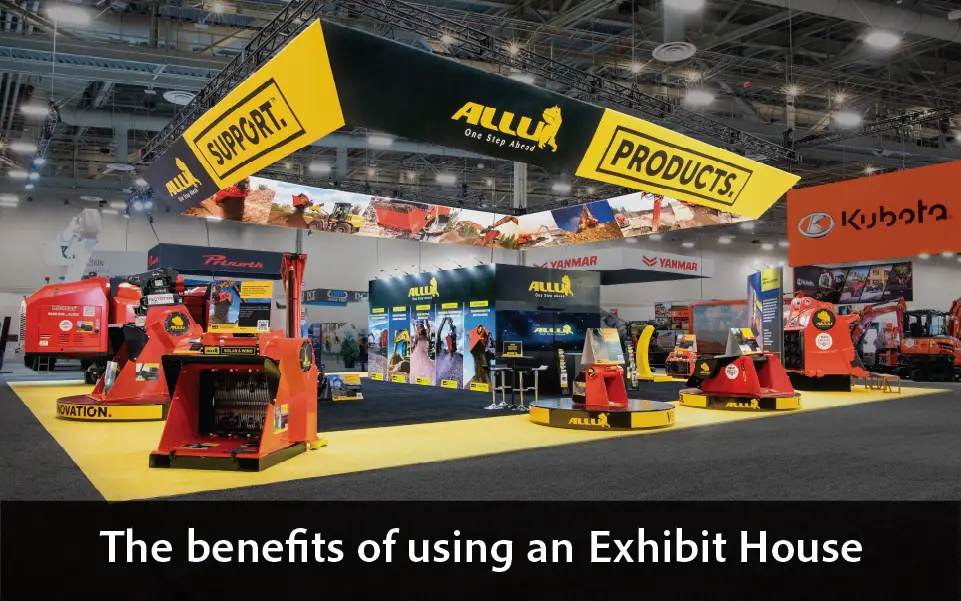K.I.S.S. | Less is More with Trade Show Graphics
Keep It Simple… well, you know the rest, it is one of the first principles taught in design school and one of the first to be forgotten. This rule is especially relevant when designing trade show graphics due to the vast real estate they offer.
The primary purpose of trade show graphics is to identify who you are and attract attendees to your booth space. The tendency to fill every square foot of graphic area with information can create a cluttered and confusing message. Focus on the basics here. A logo and tagline or short sentence stating who you are and what you offer can be enough to attract visitors and start conversations, which is the real point of face-to-face marketing.
Get Recognized at Trade Shows
Trade shows are great venues for promoting your company’s marketing initiatives to prospective customers. Pre-event mailers and e-mail announcements alerting your targeted audience should be consistent. Your exhibit graphics should have the same look and feel so there is an immediate connection.
You have a moment to catch visitors’ attention at an event… and even less time to hold it. A sense of familiarity and brand awareness will go a long way to make you stand out in the crowd.
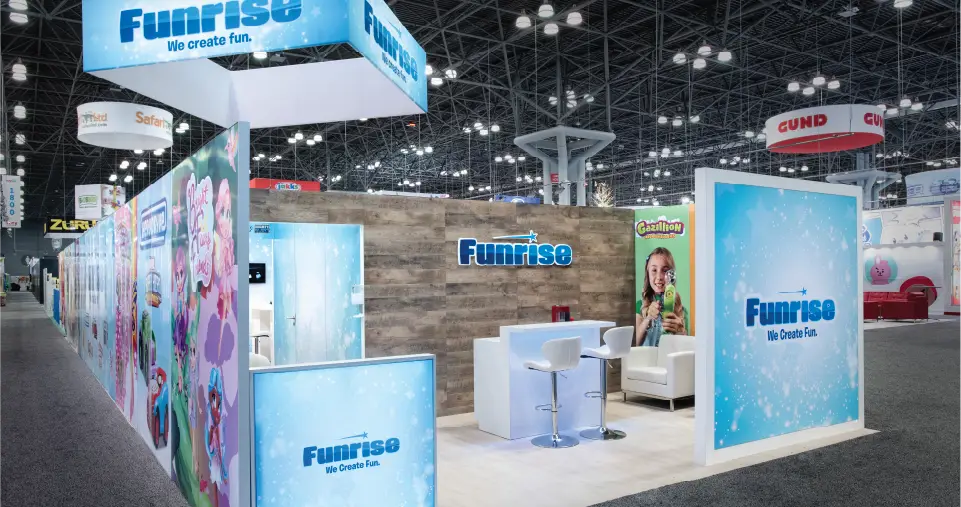
Know Your Audience
Research the trade show you are attending and be strategic about marketing to the specific needs of that audience. Creating a message that will speak to them directly can go a long way toward drawing traffic to your exhibit.
Know Your Trade Show Exhibit Architecture
Trade show architecture is not a flat surface—it is a three-dimensional structure with curves, corners, peaks, and valleys. Graphic designers must keep all of these competing elements at the forefront in order to achieve a successful outcome. Imagery that complements exhibit architecture creates a harmonious visual statement. Attendees viewing it will leave a lasting impression and positive reflection of your brand.
A properly designed exhibit will already possess a visual hierarchy. Attendees entering the show floor view hanging signage from long distances. Text and imagery for these graphics should be scaled appropriately for the highest visual impact. Large graphics on back walls should have logos and messaging as high as possible for the best visibility in congested areas. Remember to keep messages short and simple.
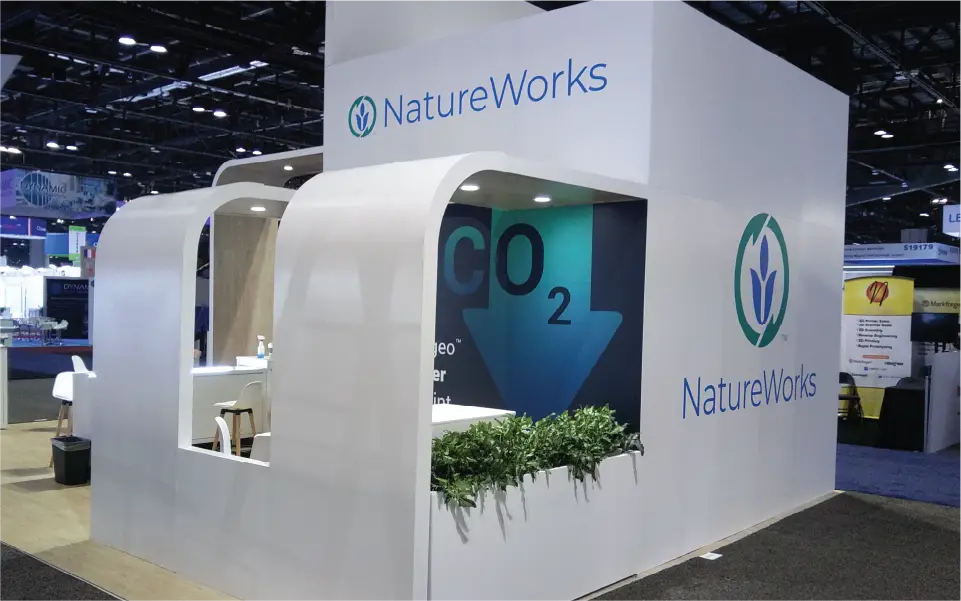
Technical Advice and Tips
Wide-format graphics used in trade show exhibits possess unique technical challenges that other smaller-scale print jobs do not. With the endless variety of materials and finishing methods available today, special attention needs to be paid to ensuring graphic files conform to the specific guidelines for each application.
Your exhibit provider is an expert in these different methods and can assist in all aspects of the design and production process. Graphic templates detailing file submission requirements should be provided for your reference. These documents usually include file format guidelines, image resolution recommendations, and sizes, including safe zones, bleeds, and other potential obstructions that can affect the graphics’ legibility.
Some best practices include setting up graphic files at 100% of the final output size. This benefits all involved with the production process. For designers, viewing art at 100% on screen is a quick check for determining if placed raster images are high enough resolution for final output. It eliminates the need for doing math during the final output phase for print providers. Errors during printing on large-scale graphics can be extremely costly!
Adobe Illustrator is recommended for creating artwork as it is the most widely accepted platform for large-format graphics in the industry. Tagging colors using the PMS matching system will help communicate necessary corporate standards. Creating fonts to outlines will ensure all fonts print correctly. Be sure to run spell check first. There is no such thing as a small spelling error on a large scale!
If you have questions about your next wide-format print project, contact us, and we will be happy to assist. For our more detailed file submission guidelines, see our Graphics Guide.

